Albert Einstein said, “Reality is merely an illusion, albeit a very persistent one”. This saying has become increasingly relevant over the last century as technology continues to transform how we interpret the world around us. We’ve learned that nothing is as it seems after several enthralling breakthroughs, mainly concerning particle interactions at the microscale.
Einstein’s quote is also relevant in many other ways. Not only cosmologically (since most of those things have little impact on our daily lives) but also biologically. It implies that everyone has his or her own version of reality. Sometimes, your reality intersects with the realities of others. Sometimes, your reality is yours alone. And sometimes, you visit our channel to have yours changed.
The following 25 facts will not only blow your mind – but will also make you question everything you thought you knew.
Here are 25 Facts That Will Make You Question Everything.

Women Can Smell Gonorrhea (go·nuh·ree·uh)
 https://www.livescience.com/17403-std-smell-gonorrhea.html
https://www.livescience.com/17403-std-smell-gonorrhea.html Yes, it is true. In 2011, Russian scientists placed cotton pads into the armpits of 34 men. Only 16 were in good health. Five of the men had recently been cured of gonorrhea, while 13 others actively had the sexually transmitted disease (STD). The pads were removed after an hour. The team then strolled around to the women’s side and invited the 18 ladies to take a sniff. The women then described the pads by selecting terms from a selection that included “putrid” and “floral.” They were also asked to score the pleasantness of the sweaty samples on a 10-point scale.
There was a noticeable difference between the healthy men’s pads and those with the STD. Half of the men with active infections were described as “putrid,” and 32% of those cured were labeled the same. 26% of the healthy men were described as “floral,” while only 10% of the infected group got the same description. Researchers have no idea why the female nose has this ability. They concluded it could be an evolutionary mechanism for weeding out dangerous sexual partners.
If You’re Murdered in the U.S., There’s a 40% Chance Police Will Never Find Your Killer
 https://www.cbsnews.com/news/unsolved-murders-crime-without-punishment/
https://www.cbsnews.com/news/unsolved-murders-crime-without-punishment/ If you want to look at it another way – that means you have a 40% chance to get away with murder… If you’re so inclined, of course. A 50% possibility exists if you brutally assault someone. And if you commit any other crime, you’ll probably get away with it, too. In short, the majority of offenses do not result in arrests. Worse, these figures only highlight a part of the picture. Murder clearance rates often fall even lower in some communities.
Researchers discovered that black victims, who accounted for the majority of homicides in 52 of the United States’ largest cities over the past decade, were the least likely of any race group to have their murders end up in an arrest. While police arrested someone in 63% of white victims’ deaths, they only arrested someone in 47% of black victims’ deaths.
Humans Have Tongue Prints
 https://www.scienceofpeople.com/the-weirdest-fact-about-human-tongues/
https://www.scienceofpeople.com/the-weirdest-fact-about-human-tongues/ Did you know that each person has a distinct tongue print? A tongue print is measured in two ways, according to experts. The first is the tongue’s form. The top of our tongue has a distinct geometric shape. Some people, for example, have long tongues, whereas others have short ones. The second is the physiological texture of the tongue.
Much like your fingerprint ridges, your tongue has a unique set of bumps, wrinkles, seams, and marks. Unlike fingerprints, tracking down bad guys who leave their tongue prints everywhere will be difficult. After all, it’s well hidden inside the mouth and won’t leave any marks unless the person really wants to leave them. However, this makes it an interesting, even appealing choice for biometrics because it will be undeniable proof of identification. Who knows, it might even help bring down the unsolved murder rates.
Evidence Exists Of Other Life-Sustaining Exoplanets
 https://www.seeker.com/earth-like-planet-can-sustain-life-1765116693.html
https://www.seeker.com/earth-like-planet-can-sustain-life-1765116693.html Gliese 581g is about 20 light-years from Earth. It is the first planet or exoplanet we’ve discovered so far that exhibits the conditions needed for sustaining life. According to Steven Vogt, an astronomy and astrophysics professor at the University of California, Santa Cruz, the chances of life on this planet are 100%.
The planet orbits its star in what is known as the habitable zone, where temperatures are ideal to sustain almost any sort of life. The Carnegie Institution’s astronomer Paul Butler estimated that this “Goldilocks” exoplanet is just the right size and distance from its star to have liquid water on its surface. Meaning that we genuinely are nothing but tiny specks in the tremendous expanse that is space. Now, we just need to get there.
We Cry In Order To Survive (amongst other things)
 https://www.livescience.com/7854-theory-cry.html
https://www.livescience.com/7854-theory-cry.html Nobody knows why we cry, but there are plenty of theories. There is obviously an emotional component. At times, tears are also produced as a form of defense against dust and smoke. In 2009, an evolutionary biologist looked at it from a survival perspective and asked, “What evolutionary benefit does crying offer?” According to Oren Hasson’s study, it indicated defenselessness, but in a good way. Crying is a non-threatening signal. As a result, tears may be more effective at preventing violence than an argument. Tears can elicit sympathy from others, and any form of protection improves an individual’s survival chances.
Additionally, crying together could strengthen relationships. Hasson had to admit that it would only be effective in certain instances. Obviously, crying in front of your boss is not likely to result in a gracious salary increase.
Oxford University Predates the Aztec Civilization
 https://museumfacts.co.uk/university-of-oxford/
https://museumfacts.co.uk/university-of-oxford/ Teaching at Oxford began as early as 1096. By 1249, the University of Oxford had evolved into a full-fledged university, complete with student lodging at the school’s three original “halls of residence”—University, Balliol, and Merton Colleges. But Oxford is far from the oldest university. India’s Nalanda University had operated for hundreds of years before Oxford started. However, Oxford, one of the oldest universities still in operation, does not feel so old. You can still study at Oxford – it’s a product of our time.
In contrast, the Aztec civilization of central Mexico feels like ancient history. Archaeologists excavate Aztec ruins, and museums display Aztec artifacts. However, the Aztec civilization did not begin until 1325, when the Mexica founded the city of Tenochtitlán on Lake Texcoco. Tenochtitlan was conquered by Spanish conquerors only 196 years later, in 1521. Nothing in this is meant to pit civilizations against one another. But it’s an intriguing way to consider how skewed our perspective of history is.
Mosquito’s Are Attracted To the Things That Live On Your Skin
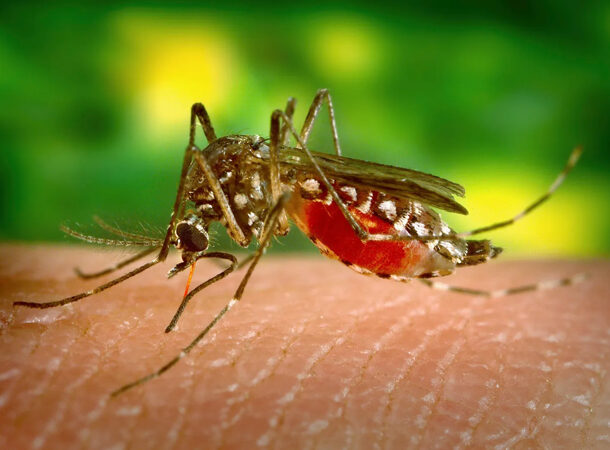 https://www.sciencealert.com/why-mosquitoes-bite-some-people-more-than-others
https://www.sciencealert.com/why-mosquitoes-bite-some-people-more-than-others We all have that one sibling or buddy who is a living, breathing mosquito magnet. A bunch of people can be standing on a meadow together, and the mosquito magnet will get all the bites. Even scientists agree that mosquitoes definitely appear to prefer some people over others. Because these insects carry deadly diseases, their feeding habits have been extensively studied. Surprisingly, blood type or skin pigment—two frequent guesses about their palate favorites – have nothing to do with their preference. It just so happens that the blood-sucking pest is drawn to something that lives on our skin.
You see, as human hosts, we not only provide tasty snacks for mosquitos, but our skins also serve as the perfect environment for millions of fungi and bacteria to flourish. The mix of species is determined by the location from which we picked them up – just like the things we touch, eat, and wear. Chemical molecules are produced by each micropopulation, and the aromas are dependent on the species mix. Mosquitoes are drawn to the scents of specific combinations. What researchers still need to understand is why the noisy pests prefer one smell over another.
Pregnancy Tests Date Back to 1350 B.C.
 https://www.discovermagazine.com/health/how-pregnancy-tests-have-evolved-throughout-history
https://www.discovermagazine.com/health/how-pregnancy-tests-have-evolved-throughout-history Pregnancy tests work by testing for human chorionic gonadotropin (hCG), a hormone that the female body creates only during pregnancy. It’s truly incredible, and those little future-determining sticks are extremely simple to use. However, if you think reading that small pink or blue line is difficult, you’ll have a lot of sympathy for the women of yesteryear.
National Institutes of Health’s Office of History cites a text inscribed on ancient papyrus describing how women in ancient Egypt urinated on barley and wheat seeds to determine if they were pregnant. If the wheat grew, the prediction was that the woman carried a female baby. If the barley grew, she was expecting a boy. If nothing grew, the woman was not pregnant. Experimenting with this seed theory in 1963 actually revealed that it was accurate 70% of the time.
Turning a Billion Seconds Old Warrants a Party
 https://www.wired.com/2013/08/one-billion-seconds/
https://www.wired.com/2013/08/one-billion-seconds/ Around half of the world’s population has never experienced the joy of commemorating their billionth second of life. Your billionth second is around halfway between your 31st and 32nd birthdays, according to mathematics. For some, this isn’t a big thing, but being one billion seconds old is a massive accomplishment for others. It makes you sound really wise.
You only need to do some basic math to figure your one billionth second out. One day has 86,400 seconds, which you can easily calculate on your phone. Divide one billion by 86,400 to get 11,574, the amount of days one billion seconds equals. Divide that figure by 365 (the number of days in a year) to get about 31.7 years. So mark the day in your schedule because you only turn one billion (seconds) old once in your lifetime.
Rain Doesn’t Smell Like Anything
 http://blogs.discovermagazine.com/crux/2018/08/28/why-can-you-smell-rain/#.XQHMoY8pAdV
http://blogs.discovermagazine.com/crux/2018/08/28/why-can-you-smell-rain/#.XQHMoY8pAdV We’ve all smelled that distinct aroma just before raindrops fall. The earthy scent is clean and almost universally recognized as pleasant. But if rain isn’t to blame, where do the lovely wafts come from?
In the scientific world, this scent is known as petrichor. It doesn’t come from the clouds or the air but is a mixture of plant oils and chemical compounds derived from actinobacteria, AKA microorganisms. When animals convert organic matter into chemicals, an alcohol called geosmin is formed. Besides being the primary component in petrichor, our human noses are also particularly sensitive to it. Humidity rises just before a storm, in turn moistening the soil. This energizes the actinobacteria and raises geosmin levels. When the first droplets hit the ground, petrichor compounds are released into the air, where the petrichor is converted into an aerosol – which rapidly travels downwind and warns us of the impending rain.
Humans Have Jumped Farther than Horses in the Olympics
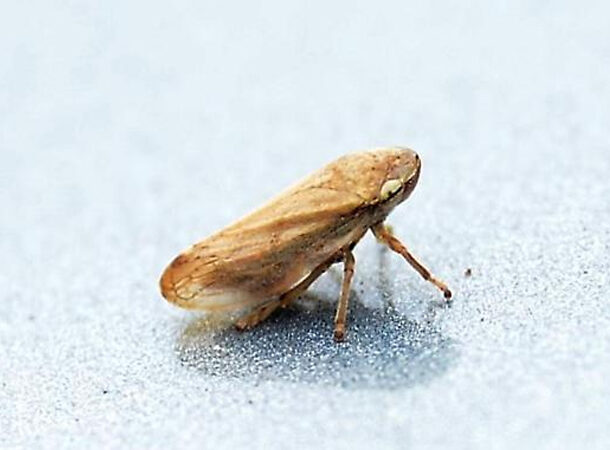 https://olympics.time.com/2012/07/16/really-strange-sports-that-are-longer-in-the-olympics/slide/horse-long-jump/#:~:text=No%20one%20could%20accuse%20equestrian,a%20human%2C%20is%208.95%20meters.
https://olympics.time.com/2012/07/16/really-strange-sports-that-are-longer-in-the-olympics/slide/horse-long-jump/#:~:text=No%20one%20could%20accuse%20equestrian,a%20human%2C%20is%208.95%20meters. Nobody can accuse equestrian horses of being unathletic. Nonetheless, the Olympic world record for the longest human long-jump exceeds the world record for the longest horse long-jump. Mike Powell set the record in 1991 with a jump of 8.95 meters, and Extra Dry set the record in 1900 with a jump of 6.10 meters.
However, we’ve still got nothing on the bugs. In 2003, researchers from Cambridge University in England named a new champion in the world of insect jumpers: the froghopper. The little bug (0.2 inches long) jumps more than two feet in the air using a unique propulsion system. Froghoppers make bounding leaps to dodge predators and find food. What they do to make these incredible jumps is more astounding than the length and height they reach – froghoppers explode from the ground with a force 400 times more powerful than gravity.
There’s No “Worldwide Food Shortage”
 https://www.worldvision.org/hunger-news-stories/food-waste
https://www.worldvision.org/hunger-news-stories/food-waste Okay, hear us out. Most of our followers wish they could end world hunger – as do we. It is a fact that people are going hungry. But when we talk about the subject, it is usually discussed in terms of growing a sufficient supply of food or having adequate crops and livestock. But the matter is more complex. The truth is that the perceived global food shortage does not exist. Instead, we have a vast distribution problem and a much worse waste problem. The entire world dumps so much perfectly delicious food, some of it at farms just for appearing less than perfect before it even reaches people’s plates.
Not only that, the sheer amount of food that we don’t finish and throw out before being prepared, and a variety of other scenarios has resulted in such a tragic amount of waste that some scientists believe that if we could effectively distribute the food that we are currently producing, we could end world hunger today.
Plants Remember When They Fall
 https://www.sciencealert.com/new-study-suggests-plants-can-learn-from-experience
https://www.sciencealert.com/new-study-suggests-plants-can-learn-from-experience The following fact has made us look at plants in a very different light. A couple of years ago, an evolutionary ecologist, Monica Gagliano, took it upon herself to prove that plants are much more intelligent than we all believe. Her mission was to demonstrate that plants, despite lacking brains, can learn and, more importantly, remember. She chose Mimosa pudica for her experiment because it responds to touch by rapidly closing its leaves. Gagliano designed a special shelf for the plants that dropped a few feet. Initially, the plants reacted defensively to the drop by curling their leaves. However, after a few drops, the plants began to understand that there was nothing to fear and stopped clamming up.
Gagliano paused the experiment for a month for the plants to “forget,” but they did not. When the month was over, and the shelf dropped again, not one of the Mimosas curled up—a tantalizing clue that the plants recalled their falling shelf and knew it was a safe experience.
Subjective Reality Doesn’t Exist
 http://www.ict.griffith.edu.au/joan/atheism/reality.php
http://www.ict.griffith.edu.au/joan/atheism/reality.php Yes, we know this may shock some of you – but it’s the truth. Some people have gone to philosophy class, heard that “reality is subjective,” and come away with the extremely muddled concept that there are several realities around them, and it all depends on “how they perceive it.” While our personal realities will always be subjective, they will always remain nothing more than our own individual realities. Unfortunately, the truth about our personal reality can never be right; it is simply the faulty lens through which we look at the universe.
By the same token, we must recognize that there is only one reality, and no matter how subjectively we experience it, one event happened one way in front of everyone and not in two separate ways simply because two people perceived it differently. Of course, most people already know this fact, unless they’ve taken too many freshman philosophy classes.
There’s a Cheese Eaten with Live Maggots
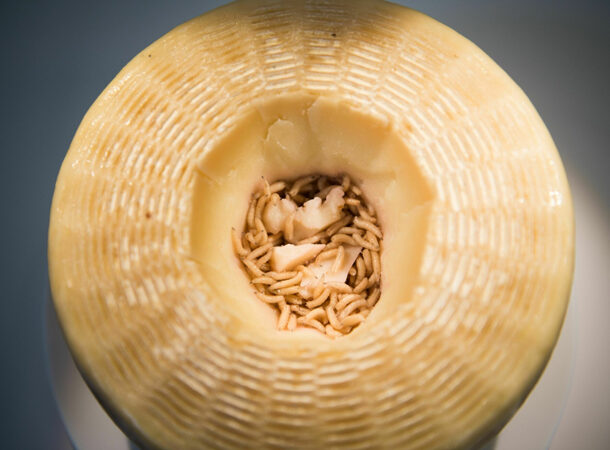 https://edition.cnn.com/travel/article/casu-marzu-worlds-most-dangerous-cheese/index.html
https://edition.cnn.com/travel/article/casu-marzu-worlds-most-dangerous-cheese/index.html Pretend for one moment that you’re going on a fantastic holiday to Italy. One of the goals is to sample Italy’s famously exquisite cuisine. The savory tomato sauces, Margherita pizzas, gelato, not to mention the wine… the list continues. If you’re feeling a little more daring, you might like to try casu marzu. This traditional cheese is the perfect summer delight for some old-school Italians, particularly those who live on the island of Sardinia. Out-of-towners, on the other hand, may simply refer to it as maggot cheese. Yes, it comes with maggots. Live ones – we kid you not.
While digging into the cheese, you’d best shield your face with your palm because the maggots are famous for jumping up to five inches into the air to escape their imminent deaths. Yikes.
Dead People Can Get Goosebumps (sort of)
 https://www.ncbi.nlm.nih.gov/books/NBK554464/#:~:text=Rigor%20mortis%20of%20the%20arrector,otherwise%20known%20as%20postmortem%20goosebumps.
https://www.ncbi.nlm.nih.gov/books/NBK554464/#:~:text=Rigor%20mortis%20of%20the%20arrector,otherwise%20known%20as%20postmortem%20goosebumps. We had to go the extra mile to confirm the following fact (and it wasn’t pleasant). Whether you find it enjoyable or not – goosebumps, also known as goose pimples or goose flesh) are a normal part of the human experience. In fact, every living being will experience goosebumps at some point in their lives, whether as a result of a cold wind or an unexpected surprise. However, what many of you may not realize is the bodies of the dead can display goosebumps in the same way that the living do – but it comes about by a very different biological process.
This uniquely unsettling display is one of the amazing things our bodies do when they begin to decompose. Decomposition begins immediately after death, and the postmortem “goosebumps” is, in fact, rigor mortis.
The World Is Not Overpopulated
 https://www.pop.org/project/debunk-the-overpopulation-myth/
https://www.pop.org/project/debunk-the-overpopulation-myth/ Hold on to your horses; this is an actual fact. Overpopulation does not exist. The world is not overpopulated – or even close to it. Yes, we have infrastructural issues when dealing with want and need, but it is crucial to know that overpopulation only occurs when there are too many people for the available resources to manage in a closed system. However, aside from the Earth itself, closed systems in our world are essentially man-made foolishness that could be abolished if the proper infrastructure was put in place.
It would literally take tens of billions of people to truly overpopulate or reach the Earth’s capacity in a scenario where the planet’s resources and landmass were used efficiently. This is not to say that our current situation isn’t severe, but the truth is that things are not nearly as bad as people think. We are not running out of resources; instead, we should figure out how to better organize them.
It is Common to See Dead Loved Ones
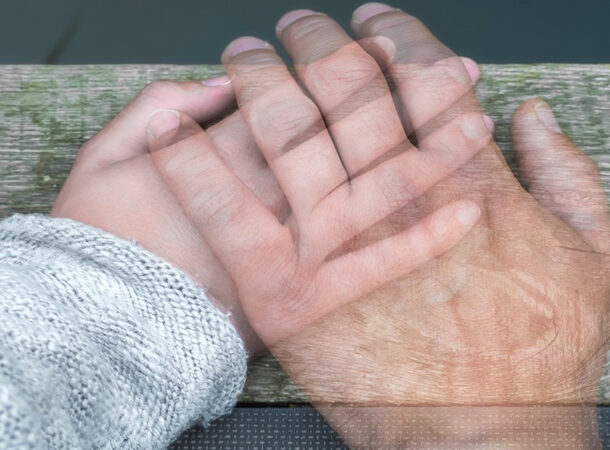 https://www.researchgate.net/publication/280866224_Post-bereavement_hallucinatory_experiences_A_critical_overview_of_population_and_clinical_studies
https://www.researchgate.net/publication/280866224_Post-bereavement_hallucinatory_experiences_A_critical_overview_of_population_and_clinical_studies When we lose a loved one, we will go to great lengths to see them again. However, when someone unexpectedly sees their departed, the experience is so terrifying that most will never talk about the encounter. The main fear, of course, is that your friends or family will think you’re crazy. However, seeing or hearing a deceased loved one is surprisingly common. It’s even got a name. Scientists call these visions post-bereavement hallucination experiences (PBHEs), and six out of every ten people will experience them. The hallucinations can be intense, with the dead appearing in their favorite seats or calling out the live person’s name.
PBHEs can be both comforting and distressing, depending on the person’s beliefs and stage of grief. For some, it’s proof that there’s life after death. For now, scientists believe PBHEs are linked to flashbacks in people suffering from PTSD, specifically brought on by the loss of a loved one.
A LOT of People Are Waking Up During Surgery
 https://www.nbcnews.com/health/health-news/30-000-people-year-wake-during-surgery-flna1c9460984
https://www.nbcnews.com/health/health-news/30-000-people-year-wake-during-surgery-flna1c9460984 If you ever talk to a surgeon about having surgery done, he’ll go out of his way to tell you that you won’t feel anything. While this is mostly accurate, it hasn’t always worked as intended. According to one study, one to two in every 1,000 patients (roughly 30,000 per year) in the United States wake up during surgery each year. Although most of those cases occur at the start or finish of the procedure, they also frequently happen right in the middle. Around 50% of the patients who wake up during surgery develop PTSD and depression, which is logical given the harrowing nature of the encounter.
It’s exacerbated by the paralytics given with anesthesia before surgery, which prevent patients from alerting the surgeons. Pain may or may not be involved in all cases, but just seeing someone chop you up and do things inside your body is enough to mess with your head for a long time.
Scents Come Off Differently to Different People
 https://www.newscientist.com/article/mg24432510-700-your-bodys-hidden-language-how-smell-reveals-more-than-you-ever-knew/
https://www.newscientist.com/article/mg24432510-700-your-bodys-hidden-language-how-smell-reveals-more-than-you-ever-knew/ According to William Shakespeare, a rose by any other name would smell just as sweet – however, a rose may not smell the same to you as it does to me. According to a study published in the Proceedings of the National Academy of Sciences in 2019, different people may perceive scents differently due to variations in their genetic codes. So, there’s a lot of leeway for interpretation when it comes to where an odor falls on the spectrum from flowers to trash.
The way a person senses odors is determined by the arrangement of amino acids in their body. A single modification to an amino acid in one gene can cause a person to perceive smells differently than someone with another amino acid combination. As we all have around 400 gene codes for smell, and on those hundreds of genes, around 900,000 potential variations, it makes for an intriguing question. Just what exactly does a rose smell like?
The Atoms in One Human
 https://www.amnh.org/exhibitions/permanent/scales-of-the-universe/atoms#:~:text=The%20human%20body%20contains%20about,(10%5E27)%20atoms.
https://www.amnh.org/exhibitions/permanent/scales-of-the-universe/atoms#:~:text=The%20human%20body%20contains%20about,(10%5E27)%20atoms. Did you realize that one human being contains more atoms than there are stars in the viewable universe? The total number of stars in the universe is estimated to be one septillion – give or take. However, the number of atoms in a human body is estimated to be approximately 1027, or one octillion. Visualize a 1 – with 27 zeros right next to it!
To put this number into perspective, the number of cells alone in one human is estimated to be around 30 or 40 trillion, meaning that if we took every human on Earth, which is plus minus eight billion people, and multiplied it by 40 trillion, we would have potentially 3.2 x 10 23, or 320 sextillion human cells on Earth. To be honest, that is nothing when compared to one octillion atoms in a single person!
You Swallow 365 Cups of Mucus in a Year
 https://www.vox.com/2015/2/11/8013065/mucus-snot-boogers
https://www.vox.com/2015/2/11/8013065/mucus-snot-boogers We purposefully left this fact for number four on today’s list because mucus is utterly and wholly disgusting, and we wanted to give you food, or mucus, for thought. Before we continue with the mucus, let us also take a minute to consider that each of us will swallow 10 spiders and 70 types of insects (or more) during our lifetimes. That is one eye-opening fact we could have gone without. But back to all the mucus-swallowing – 365 cups per year equates to over 22 gallons of mucus a year. Nice.
While excessive phlegm is unpleasant, we do not want to be without it. Mucus is the barrier between you and the outside world. As a result, it is critical – and not just for us humans. It is also the slime that permits a snail to travel on the ground and the slippery coating that protects fish from microorganisms in the water. It’s something we can’t do without, however much we may be grossed out by it.
Your Decisions Can Create An Alternate Universe
 http://www.dummies.com/education/science/physics/string-theory-level-3-parallel-universes/
http://www.dummies.com/education/science/physics/string-theory-level-3-parallel-universes/ According to the many worlds’ interpretation of quantum physics, every decision you make, no matter how minor, produces a parallel universe in which you make a different decision. For example, if you drive to work, there is another universe where you take the bus. Level 3 parallel universes exist in the same space and time as our reality but are inaccessible to us. This theory has profound implications. (We know it’s a theory, but we added it to our list because it’s awesome to consider – plus, who knows if it is only a theory?)
For starters, there exists an infinite number of parallel universes to take into account every single action! This theory also inspires extensive philosophical thought. How do these universes vary from ours? Were ordinary people’s insignificant decisions harmful to the overall course of the universe? For example, did stepping on a bug indirectly prevent World War III? If you think about it for too long, you may become dizzy. Just think about it – there could be an alternate universe where your wife happily married someone else. The immensity of this theory certainly inspires a stunned “wow.” It also suggests that every single decision you make is the most important you could ever make.
Dinosaurs Could Have Still Existed Today if the Asteroid had Struck Earth in a Different Location
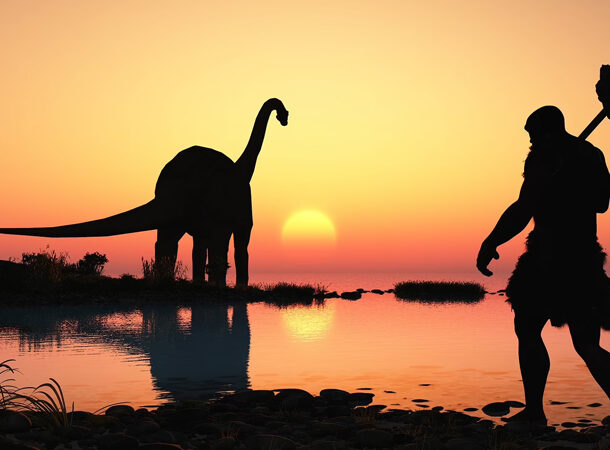 https://www.usatoday.com/story/tech/2017/05/17/dinosaur-destroying-asteroid-still-roaming-earth/101783508/
https://www.usatoday.com/story/tech/2017/05/17/dinosaur-destroying-asteroid-still-roaming-earth/101783508/ As the BBC documentary The Day The Dinosaurs Died explains, the impact was so deadly because of the location where the asteroid hit. The asteroid collided with the shallow waters surrounding the Yucatan Peninsula, causing a large cloud of sulfur to form due to the underlying gypsum deposits. This cloud caused the global winter, which wiped out three-quarters of Earth’s life at the time, including the dinosaurs.
If the asteroid had collided with the neighboring Atlantic or Pacific Oceans, it would have melted considerably less rock, including the lethal gypsum. The cloud would not have been as dense, and sunlight would have still reached the planet’s surface, potentially avoiding what happened next. Jurassic Park could have been a reality if the asteroid’s trajectory had been slightly different. And it would have been incredible! Except for the Raptors…
The Modern World Is Bad For Our Brains
 https://www.psychologytoday.com/us/blog/modern-world-modern-mind/202206/modern-life-changes-the-brain-heres-how-change-it-back
https://www.psychologytoday.com/us/blog/modern-world-modern-mind/202206/modern-life-changes-the-brain-heres-how-change-it-back It is a well-known fact that the stress and pressures of modern life are intense and of such a scale we’ve never experienced before. But did you know today’s modern stressors can damage your brain’s prefrontal cortex, resulting in “frontal fatigue”? It’s a condition that makes people more vulnerable to psychological disorders and other mental issues. Scientists have developed an approach to counter fatigue to lower stress and restore life balance. First, it is vital to recognize the symptoms: forgetting words and small things, struggling to multi-task, having difficulty maintaining attention, and venting irritations and negative emotions.
They also recommend doing hands-on hobbies like crafting, cooking, creating art, gardening, playing an instrument, or tackling a DIY project. Indulge your senses in the search for beauty: Look, smell, hear, and taste everything life offers. Talk with, question, greet, or chat with others—not just those close to you, but also people you see, pass by, work with, and stand in line with.
Better control thoughts and moods through meditation or diversion, reading books, and becoming less irritable. In addition, doctors also prescribe that we disconnect from social media and tech whenever possible.



























